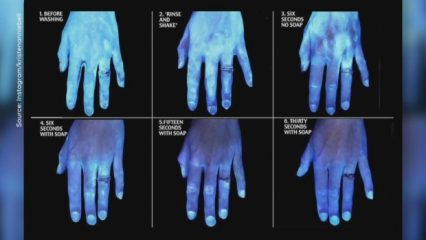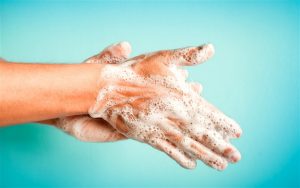Hand Hygiene
Bio of Dr. Ari Greenspan
May 14, 2020Personal Protective Equipment
May 25, 2020Hand Hygiene
Hand hygiene is the most important measure to prevent the spread of infections among patients and DHCP. Education and training programs should thoroughly address indications and techniques for hand hygiene practices before performing routine and oral surgical procedures.
For routine dental examinations and nonsurgical procedures, use water and plain soap (hand washing) or antimicrobial soap (hand antisepsis) specific for health care settings or use an alcohol-based hand rub. Although alcohol-based hand rubs are effective for hand hygiene in health care settings, soap and water should be used when hands are visibly soiled (e.g., dirt, blood, body fluids). For surgical procedures,1 perform a surgical hand scrub before putting on sterile surgeon’s gloves. For all types of hand hygiene products, follow the product manufacturer’s label for instructions. Complete guidance on how and when hand hygiene should be performed, including recommendations regarding surgical hand antisepsis and artificial nails can be found in the Guideline for Hand Hygiene in Health-Care Settings pdf icon[PDF – 494 KB].
Guideline for Hand Hygiene in Health-Care Settings pdf icon[PDF – 494 KB].
- Perform hand hygiene—
a. When hands are visibly soiled.
b. After barehanded touching of instruments, equipment, materials, and other objects likely to be contaminated by blood, saliva, or respiratory secretions.
c. Before and after treating each patient.
d. Before putting on gloves and again immediately after removing gloves.
- Use soap and water when hands are visibly soiled (e.g., blood, body fluids); otherwise, an alcohol-based hand rub may be used.
Footnote
1 Definition from 2003 CDC Dental Guidelines—Oral surgical procedures involve the incision, excision, or reflection of tissue that exposes the normally sterile areas of the oral cavity. Examples include biopsy, periodontal surgery, apical surgery, implant surgery, and surgical extractions of teeth (e.g., removal of erupted or nonerupted tooth requiring elevation of mucoperiosteal flap, removal of bone or section of tooth, and suturing if needed).